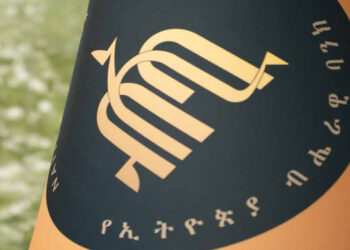Ethiopia’s economy went through a rollercoaster in late 2024, trying to find its balance amid big changes in the foreign exchange system and stubborn inflation. A report from the Ethiopian Economics Association (EEA) offers a detailed snapshot of how things unfolded, especially between July and December 2024—a period marked by bold reforms, tough realities, and some glimmers of progress.
In July 2024, Ethiopia made a major policy shift by moving from a managed exchange rate to a freely floating system. This change meant that the value of the Ethiopian Birr (ETB) would now be determined by market forces, rather than being tightly controlled by the government.
At first, things seemed somewhat steady. But by October and November, the Birr started to lose value quickly. From 114.72 ETB/USD in mid-September, the exchange rate jumped to 127.92 ETB/USD by the end of December. That’s a significant drop in just a few months.
What happened?
Part of the volatility came after the government banned the Franco Valuta system—a move that briefly slowed down the rate of depreciation but didn’t hold for long. The market kept adjusting, trying to catch up with years of pent-up demand for foreign currency.
As the new FX system matured, banks started offering different exchange rates. On December 31, for example:
- Buying USD: Ranged from 123.60 ETB at CBE to 125.97 ETB at Tsehay Bank
- Selling USD: Clustered between 127 and 127.5 ETB
This competition is a sign of a more open and liquid FX market. The gap between buying and selling prices—called the bid-ask spread—was wide at first but narrowed over time. That’s a positive sign, showing the market is becoming more efficient.
The parallel (black) market still had higher rates than the official ones, especially around mid-December, but the gap began to shrink by the year’s end. This ongoing disparity, however, suggests that demand for forex is still higher than what the formal system can offer.
While the exchange rate was adjusting, inflation continued to bite. During the first quarter of EFY 2024 (July to September), prices kept rising, especially in September, when monthly inflation hit 2.4%.
- Food prices saw wild swings, with vegetables up 5.6% and oils and fats up 4.9% in September alone.
- Non-food items weren’t immune either. Education costs surged 11.6%, eating out got pricier (8.7%), and transport costs rose 6.8%.
The inflation didn’t hit all regions equally. Some areas, like Benishangul-Gumuz (31%) and Amhara, suffered the most—likely due to ongoing conflict and disrupted supply chains. Harari, on the other hand, had the lowest at 17.2%. Still high, but relatively better.
The EEA report highlights something critical: as the ETB weakens, inflation worsens—especially for food. The data shows that when the exchange rate crossed the 100 ETB/USD mark, inflation started to pick up more rapidly.
Why? Because Ethiopia imports a lot—especially food items and other essentials. When the Birr loses value, everything bought from abroad becomes more expensive, which then pushes prices up at home.
The EEA’s message is clear: Ethiopia is making progress, but the path is still rough. The FX reform was a big move in the right direction, but it’s not a magic fix. Inflation, especially food inflation, remains a serious threat to people’s everyday lives.
what they recommend …
- Stabilize the FX market further, with clear rules and support mechanisms.
- Manage inflation better, especially with targeted tools to ease food price pressure.
- Address the parallel market gap by making the official FX system more responsive to demand.
- Fix supply-side issues—like broken transport networks and low domestic production—that are driving prices up.
- Push for economic diversification so Ethiopia isn’t so dependent on imports and can weather global shocks more easily.
Ethiopia is undergoing a deep economic transformation. The FX liberalization marks a shift toward a more market-driven economy, but it’s happening in a tough environment—with global uncertainties, internal conflicts, and limited buffers.
The story of late 2024 is one of adjustment, struggle, and cautious hope. The decisions made now will shape how resilient Ethiopia becomes in the years ahead.




















